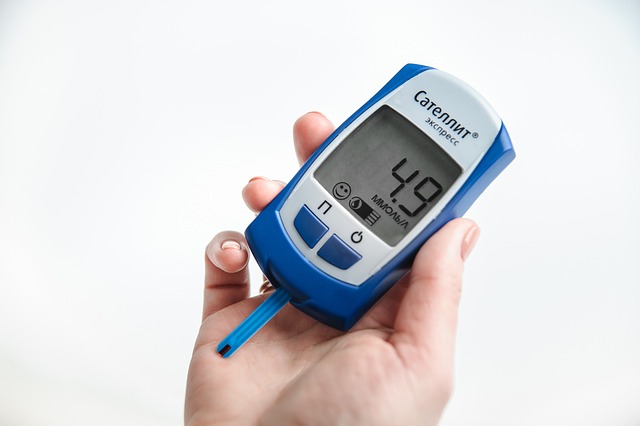Executive Summary
Diabetes affects 1 in 8 Americans, including 1 in 4 of adults over 65 years, and prediabetes affects another third of American adults, including nearly half of those over age 65. The conditions raise risk for complications and comorbidities, and account for 1 in 7 healthcare dollars spent. Type 2 diabetes, which comprises 90 to 95% of cases of diabetes, follows prediabetes and is the result of worsening insulin resistance. It is largely preventable, and Medicare Advantage plans are required to offer diabetes prevention services. Effective diabetes prevention can have economic benefits for Medicare Advantage providers, which is an important consideration given that Medicare Advantage plans must offer all of the services in Medicare Parts A and B, and often cover additional services.
The Medicare Diabetes Prevention Program (MDPP) expanded model is a lifestyle intervention that is proven to lower diabetes risk among high-risk patients. Each case of diabetes that is prevented or delayed saves an estimated $9,601 per year. Many DPP providers are accessible through the Centers for Disease Control and Prevention (CDC) National Diabetes Prevention Program (NDPP), but they are not always feasible or cost-effective. Medicare Advantage plans can implement low-cost-diabetes prevention by choosing an online program such as Lark, which is lower in cost than in-person programs and proven to be effective. It is also simple to implement.
Background
Diabetes prevention is a priority nationwide, and a mandate in Medicare. Medicare Advantage (“Part C”) plans must offer the same services as Medicare Parts A and B, and often offer more services. A major challenge is funding the mandatory and additional services. The Diabetes Prevention Program (DPP) is a required service in Medicare that offers an opportunity for cost reduction in Medicare Advantage plans. If implemented well, the DPP can lead to cost savings and the ability to offer more services to beneficiaries.
Need for Diabetes Prevention
A brief overview of the burden of diabetes in the U.S. is enough evidence for the need for diabetes prevention. Diabetes is responsible for 14% of total medical expenses in the U.S. and an annual cost of $327 billion in direct and indirect expenses. On average, compared to a patient without diabetes, the additional annual medical expenses for a single patient with diabetes are $9,601 higher.[1]
Diabetes affects 1 in 8 Americans. It hits the Medicare population especially hard, since 5 in 6 Medicare beneficiaries are 65 years or over, and 1 in 4 people in this age group have diabetes[2, 3]. Medicare patients with diabetes have more than 60% more hospital admissions and more than twice as likely to report being in fair or poor health than Medicare beneficiaries without diabetes. [4]
Another 1 in 3 adults, including nearly half of those at least 65 years old, have prediabetes. Among people with prediabetes, 5 to 10% will develop diabetes per year and more than 2 in 3 will develop type 2 diabetes at some point in their lives.[5]
It is therefore surprising that not only is type 2 diabetes largely considered preventable, and prediabetes considered treatable, but that diabetes prevention is a required part of Medicare.
Potential for/Benefits of Diabetes Prevention
Diabetes prevention is an important strategy for improving health outcomes and reducing costs in Medicare and Medicare Advantage. Through the Medicare Diabetes Prevention Program (MDPP), traditional Medicare and Medicare Advantage plans must cover the National Diabetes Prevention Program (NDPP).
The MDPP developed from the Diabetes Prevention Program (DPP). The Centers for Disease Control and Prevention (CDC) DPP has been clinically proven to prevent or delay the onset of type 2 diabetes among overweight or obese patients who are at high risk for developing diabetes based on a diagnosis of prediabetes, a history of gestational diabetes, or a high score on the CDC’s Prediabetes Risk Test. In the landmark multi-center study, the average reduction risk of developing type 2 diabetes was 58%, with the greatest reduction in risk, 71%, seen in among participants at least 60 years old.
The DPP is a lifestyle change intervention that presents a CDC-approved curriculum in 22 to 26 sessions in a year. Months 1 to 6 are more intense, with 16 sessions, and months 7 to 12 include 6 to 10 sessions. Trained lifestyle coaches present the curriculum. The primary goal is for participants to lose at least 5% of initial body weight, and participants are also encouraged to achieve at least 150 minutes per week of moderate to vigorous physical activity.
The Diabetes Prevention Recognition Program (DPRP) comprises over 1,800 DPP providers nationwide and online. Many providers are working towards or have achieved preliminary CDC recognition, and a small minority have met a list of benchmarks and achieved full CDC recognition. Payors are reimbursed for each participant, with greater amounts when participants achieve weight loss and participation benchmarks.[6]
Problem Statement
On the surface, the parts seem to be in place for the DPP to be effective in Medicare. The science backs the effectiveness of the DPP. The DPRP has established the infrastructure for DPP administration. The MDPP Expanded Model requires Medicare to cover the DPP. Why, then, do only 1 to 11% of eligible patients participate in a DPP,[7] and how can Medicare Advantage plans to implement low-cost diabetes prevention?
Barriers to Optimal Diabetes Prevention
Gaining an understanding of the obstacles faced by stakeholders from providers and participants to payors can guide Medicare Advantage plans in implementing low-cost diabetes prevention. Healthcare providers and participants both experience barriers that contribute to the gap in DPP participation and results.[8]
Healthcare providers may not be aware of the DPP, know how to refer patients to it, or know how effective lifestyle changes can be compared to doing nothing or to taking medications. They may worry about lifestyle coaches lacking a medical background. An outdated curriculum is another concern, as the CDC curriculum is static once published, and updated only rarely.
Potential participants may not be aware of the opportunity or their eligibility. Once they know that they are eligible for the DPP, potential participants have cited additional hurdles. They may not be able to attend on-site classes due to scheduling conflicts, to distance or other transportation concerns, or to simply not wanting to go at the designated time. Another hesitation may be dread of weighing in in-person, as required in traditional DPP interventions.
Prohibitive Costs and Procedures
There is, of course, another stakeholder with power to increase DPP reach: the payor. Excessive DPP costs can lead to hesitation to contract with DPP providers, as can concern that the process will be too cumbersome or not meet their needs.
Cost is always critical. While undoubtedly positive for health outcomes, the original DPP lifestyle intervention is of dubious cost-effectiveness, with some return-on-investment (ROI) studies finding it to be a bad or neutral economic investment. Further cause for concern stems from a recent study that found average reimbursement in MDPP to be less than 20%.
Payors can also be concerned about logistics. The implementation process could be lengthy and time-consuming if the DPP provider does not provide the necessary support for start-up. Savvy payors who expect to grow may also look to the future. Can their DPP provider keep up with rapid growth, and can the DPP continue to be as high-quality and low-cost as it initially promised?
Solution
The above barriers to diabetes prevention diminish when Medicare Advantage plans analyze costs carefully and take an overall prudent approach to implementing their programs. Lark DPP is a fully online program, powered by artificial intelligence (AI), that employs innovative cost-reduction strategies can avoid some common barriers to low-cost diabetes prevention in Medicare Advantage. The program has demonstrated outcomes and is the only fully automated DPP to achieve full CDC recognition. [10]
Comparison of Diabetes Prevention Program features by provider.
Healthcare providers who are wary of referring patients to lifestyle coaches who are not medical professionals can be confident in Lark’s AI-powered program. Not only lifestyle coaches, but also nutritionists, exercise physiologists, behavior change specialists, and more experts were involved in the development and evolution of the program. Furthermore, while programs that depend solely on the CDC’s curriculum or a CDC-approved curriculum may quickly become outdated, Lark continuously makes updates.
Because it is online, Lark enables Medicare Advantage beneficiaries who are potential DPP participants to avoid many common barriers to participation. Patients have 24/7 access to their Lark coach with no need to attend inconvenient sessions at designated times or in designated places. There is no stigma or shyness due to the remote nature of the program.
Lark DPP can make the decision easier for payors. The program is infinitely scalable at cost, allowing payors to expand their covered population without concern about a lag in coverage or an increase in prices. Lark’s AI allows all patients to receive the same degree of personalization in their programs, regardless of how many patients are being served.
Avoiding Unnecessary Costs
As cost is a major barrier, Medicare Advantage plans need to examine the costs associated with the DPP provider they are choosing, as well as maximize the amount of reimbursement that they are expecting. Lark DPP supports both of these goals as it lowers costs and has shown good outcomes.
Affordability of offering the DPP may be closer than it appears initially. An analysis of the 10-year cost-effectiveness of the DPP concludes that reducing costs by one-third can lead to cost-effectiveness.[11] Compared to competitors, Lark DPP through a network costs about 40% less.
The reduction in cost is partly due to eliminating the middle-man. In addition, the online nature of Lark allows for cost savings from scalability: as the program grows, no additional live experts or lifestyle coaches need to be hired. Another source of cost savings is the lack of in-person sessions, so no facilities need to be reserved or rented. Lark uses performance-based billing as well.
Conclusions
Diabetes prevention is a mandate in Medicare, and low-cost prevention is a necessity for Medicare Advantage to effectively manage costs. Lark DPP is a lower-cost, fully-recognized DPP that makes the process simple and worthwhile.
References
- American Diabetes Association. Economic Costs of Diabetes in the U.S. in 2017. Diabetes Care 2018;41(5):917-928
- National Center for Chronic Disease Prevention and Health Promotion, Division of Diabetes Translation. National Diabetes Statistics Report, 2017: Estimates of Diabetes and Its Burden in the United States. https://www.cdc.gov/diabetes/pdfs/data/statistics/national-diabetes-statistics-report.pdf
- Multack M, Noel-Miller C. Who relies on Medicare? American Association of Retired Persons Public Policy Institute. Fact Sheet 259, June, 2012. https://www.aarp.org/content/dam/aarp/research/public_policy_institute/health/who-relies-on-medicare-factsheet-AARP-ppi-health.pdf
- Hasche J, Ward C, Schluterman N. Diabetes occurrence, costs, and access to care among Medicare beneficiaries aged 65 years and over. Centers for Medicare and Medicaid Services. September 2017. https://www.cms.gov/Research-Statistics-Data-and-Systems/Research/MCBS/Downloads/Diabetes_DataBrief_2017.pdf
- Tabak AG, Herder C, Rathmann W, Brunner EJ, Kivimai M. Prediabetes: A high-risk state for developing diabetes. Lancet. 2012 Jun 16; 379(9833): 2279–2290
- Centers for Medicare and Medicaid Services. Fact Sheet: Final Policies for the Medicare Diabetes Prevention Program Expanded Model in the Calendar Year 2018 Physician Fee Schedule Final Rule. https://innovation.cms.gov/Files/fact-sheet/mdpp-cy2018fr-fs.pdf. Accessed April 29, 2019
- Venkataramani M, et al. Prevalence and Correlates of Diabetes Prevention Program Referral and Participation. American Journal of Preventive Medicine, Volume 0, Issue 0. https://www.ajpmonline.org/article/S0749-3797(18)32334-1/fulltext
- Johnson N, Melton ST. Perceived benefits and barriers to the Diabetes Prevention Program. PLAID: People Living with And Inspired by Diabetes [Online], 2.1 (2016): n. pag. Web. 13 Mar. 2019.
- Stein N, Brooks K. A fully automated conversational artificial intelligence for weight loss: longitudinal observational study among overweight and obese adults. JMIR Diabetes. 2017;2(2):e28. DOI: 10.2196/diabetes.8590
- Lark Health Earns CDC Full Recognition for Diabetes Prevention Program. February 26, 2019. https://larkdev.wpengine.com/lark-achieves-full-cdc-recognition-for-diabetes-prevention-program
- Diabetes Prevention Program Research Group. The 10-Year Cost-Effectiveness of Lifestyle Intervention or Metformin for Diabetes Prevention. An intent-to-treat analysis of the DPP/DPPOS. Diabetes Care. 2012 Apr; 35(4): 723-730. https://doi.org/10.2337/dc11-1468











.webp)







